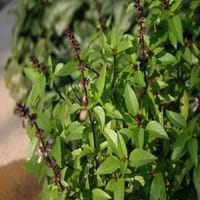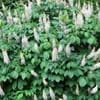Life Span
Perennial
Annual
Origin
Southeastern United States
Middle Africa, Southern Africa, Southern Asia, Southeastern Asia
Types
Not available
Not Available
Habitat
Bluffs, Coastal Regions, Stream side, Woods
gardens, Wet lands
USDA Hardiness Zone
5-9
9-11
Sunset Zone
Not Available
A1, A2, A3, H1, H2, 1a, 1b, 2a, 2b, 3a, 3b, 4, 5, 6, 7, 8, 9, 10, 11, 12, 13, 14, 15, 16, 17, 18, 19, 20, 21, 22, 23, 24
Habit
Spreading
Clump-Forming
Flower Color
White, Pink
Purple, Light Pink, Lavender
Flower Color Modifier
Bicolor
Bicolor
Leaf Color in Spring
Green
Purple, Dark Green, Burgundy, Bronze
Leaf Color in Summer
Dark Green
Purple, Dark Green, Burgundy, Bronze
Leaf Color in Fall
Lemon yellow, Yellow green
Purple, Dark Green, Burgundy, Bronze
Leaf Color in Winter
Not Available
Light Green
Plant Season
Spring, Summer, Fall
Spring, Summer, Fall, Winter
Sunlight
Full Sun, Partial Sun, Partial shade
Full Sun
Growth Rate
Fast
Very Fast
Type of Soil
Clay, Loam, Sand
Loam, Sand, Well drained
The pH of Soil
Acidic, Neutral, Alkaline
Neutral
Soil Drainage
Average
Well drained
Bloom Time
Summer, Late Summer
Indeterminate
Tolerances
Salt, Wind
Drought
Where to Plant?
Ground, Pot
Container, Ground, Pot
How to Plant?
Cuttings, Seedlings
Rooted stem cutting, Seedlings, Stem Planting
Plant Maintenance
Low
Medium
Watering Requirements
Keep the Soil well drained, Requires regular watering
Keep ground moist, Requires regular watering, Water when soil is dry
In Summer
Lots of watering
Lots of watering
In Spring
Moderate
Moderate
In Winter
Average Water
Average Water
Soil pH
Acidic, Neutral, Alkaline
Neutral
Soil Type
Clay, Loam, Sand
Loam, Sand
Soil Drainage Capacity
Average
Well drained
Sun Exposure
Full Sun, Partial Sun, Partial shade
Full Sun
Pruning
Remove damaged leaves, Remove dead branches, Remove dead flowers, Remove dead leaves
Pinch or prune as they grow to promote branching and bushiness
Fertilizers
14-14-14 Fertilizer, Apply N-P-K, slow-release fertilizers
All-Purpose Liquid Fertilizer
Pests and Diseases
Edema, Powdery mildew, Verticillium Wilt
Red blotch
Plant Tolerance
Salt, Wind
Drought
Flower Petal Number
Single
Single
Fragrant Bark/Stem
No
Yes
Foliage Texture
Coarse
Medium
Foliage Sheen
Matte
Not Available
Attracts
Butterflies, Hummingbirds
Not Available
Allergy
Pollen
Respiratory problems, Runny nose, Skin rash, Vomiting
Aesthetic Uses
Cottage Garden, Showy Purposes
Showy Purposes
Beauty Benefits
Not Available
Not Available
Environmental Uses
Air purification, Wildlife
Air purification
Medicinal Uses
Antirheumatic, Colic, constipation, Piles
Cough, Cramps, Digestive disorders, Insomnia, Skin Disorders, Vomiting
Part of Plant Used
Seeds
Leaves
Other Uses
Used for making soaps
Air freshner, Can be made into a herbal tea, Used As Food, Used as a spice
Used As Indoor Plant
No
Insignificant
Used As Outdoor Plant
Yes
Yes
Garden Design
Feature Plant, Foundation, Screening, Wind Break
Bedding Plant, Container, Edible, Herb / Vegetable, Mixed Border
Botanical Name
AESCULUS parviflora
OCIMUM basilicum var. purpurascens
Common Name
bottlebrush buckeye, dwarf horse chestnut
Purple Basil
In Hindi
Bottlebrush Buckeye
बैंगनी तुलसी के पौधे
In German
Buckeye Putzer
Lila Basilikum Pflanze
In French
Bottlebrush Buckeye
plante de basilic pourpre
In Spanish
bottlebrush Buckeye
planta de albahaca morada
In Greek
bottlebrush Buckeye
Μωβ βασιλικό φυτό
In Portuguese
Bottlebrush Buckeye
Planta da manjericão roxo
In Polish
Bottlebrush Buckeye
Purpurowy bazylia roślin
In Latin
bottlebrush Buckeye
Ocimum, herba Purple
Phylum
Magnoliophyta
Tracheophyta
Class
Magnoliopsida
Magnoliopsida
Order
Sapindales
Lamiales
Family
Hippocastanaceae
Lamiaceae
Clade
Angiosperms, Eudicots, Rosids
Asterids
Tribe
Not Available
Not Available
Subfamily
Hippocastanoideae
Not Available
Number of Species
Not Available
Importance of Bottlebrush Buckeye and Purple Basil
Want to have the most appropriate plant for your garden? You might want to know the importance of Bottlebrush Buckeye and Purple Basil. Basically, these two plants vary in many aspects. Compare Bottlebrush Buckeye and Purple Basil as they differ in many characteristics such as their life, care, benefits, facts, etc. Every gardener must at least have the slightest clue about the plants he wants to plant in his garden. Compare their benefits, which differ in many ways like facts and uses. The medicinal use of Bottlebrush Buckeye is Antirheumatic, Colic, constipation and Piles whereas of Purple Basil is Cough, Cramps, Digestive disorders, Insomnia, Skin Disorders and Vomiting. Bottlebrush Buckeye has beauty benefits as follows: Not Available while Purple Basil has beauty benefits as follows: Not Available.
Compare Facts of Bottlebrush Buckeye vs Purple Basil
How to choose the best garden plant for your garden depending upon its facts? Here garden plant comparison will help you to solve this query. Compare the facts of Bottlebrush Buckeye vs Purple Basil and know which one to choose. As garden plants have benefits and other uses, allergy is also a major drawback of plants for some people. Allergic reactions of Bottlebrush Buckeye are Pollen whereas of Purple Basil have Respiratory problems, Runny nose, Skin rash and Vomiting respectively. Having a fruit bearing plant in your garden can be a plus point of your garden. Bottlebrush Buckeye has no showy fruits and Purple Basil has no showy fruits. Also Bottlebrush Buckeye is not flowering and Purple Basil is not flowering . You can compare Bottlebrush Buckeye and Purple Basil facts and facts of other plants too.





